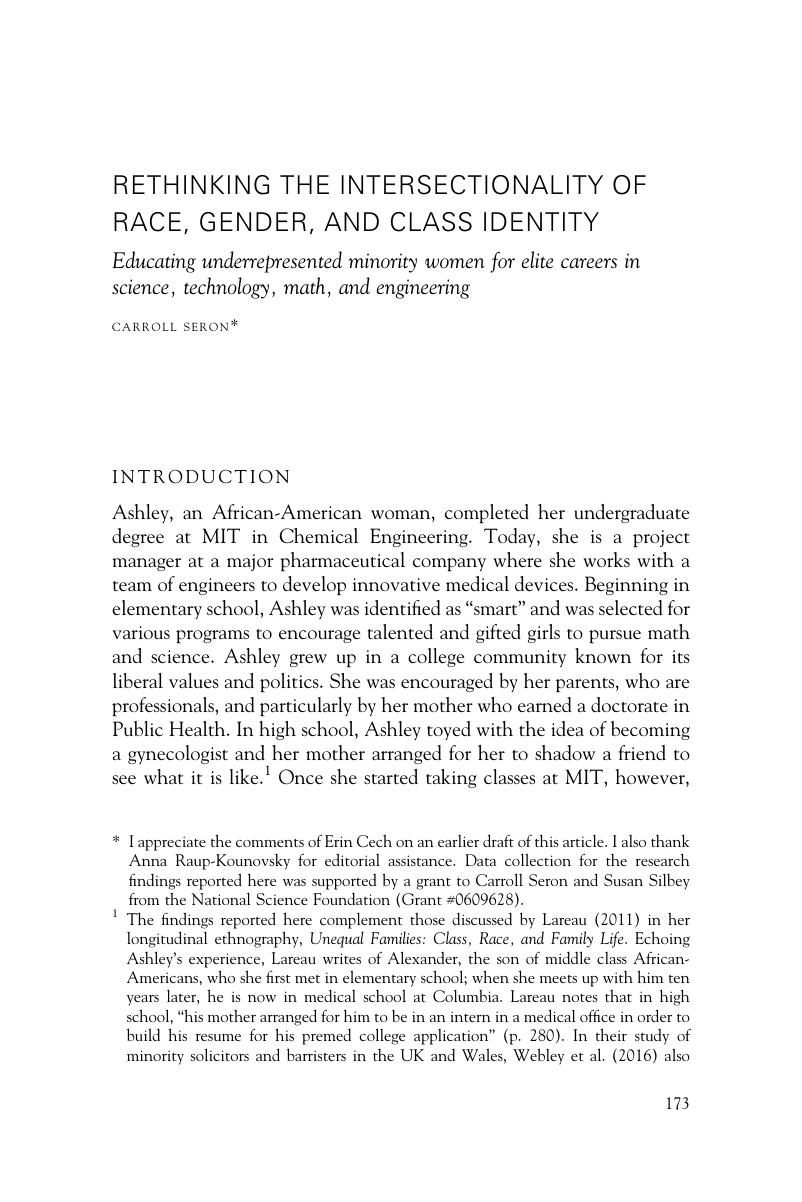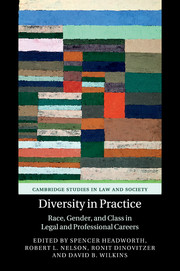Book contents
- Diversity in Practice
- Cambridge Studies in Law and Society
- Diversity in Practice
- Copyright page
- Contents
- Contributors
- Book part
- Introduction
- 1 Rhetoric and realities
- 2 Entering professional careers
- Typecast socialization
- Rethinking the intersectionality of race, gender, and class identity
- Access to a career in the legal profession in England and Wales
- The new “professionalism” in England and Wales
- 3 Inequality and opportunity in the careers of diverse attorneys
- Index
- Books in the series
- References
Rethinking the intersectionality of race, gender, and class identity
Educating underrepresented minority women for elite careers in science, technology, math, and engineering
from 2 - Entering professional careers
Published online by Cambridge University Press: 05 April 2016
- Diversity in Practice
- Cambridge Studies in Law and Society
- Diversity in Practice
- Copyright page
- Contents
- Contributors
- Book part
- Introduction
- 1 Rhetoric and realities
- 2 Entering professional careers
- Typecast socialization
- Rethinking the intersectionality of race, gender, and class identity
- Access to a career in the legal profession in England and Wales
- The new “professionalism” in England and Wales
- 3 Inequality and opportunity in the careers of diverse attorneys
- Index
- Books in the series
- References
Summary

- Type
- Chapter
- Information
- Diversity in PracticeRace, Gender, and Class in Legal and Professional Careers, pp. 173 - 197Publisher: Cambridge University PressPrint publication year: 2016
References
- 3
- Cited by



